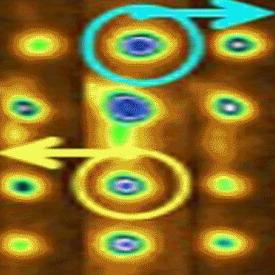Source: PC Magazine.

Forget 3G and 4G. In fact, forget about the gigahertz frequency altogether¡ªa team of researchers at the University of Pittsburgh say they¡¯ve managed to devise a means of transmitting data thousands of times faster.
The team led by Hrvoje Petek, a physics and chemistry professor in Pitt¡¯s Kenneth P. Dietrich School of Arts and Sciences, successfully created what they call a ¡°frequency comb¡± that ¡°spans more than 100 terahertz (THz) of bandwidth by exciting a coherent collective of atomic motions in a semiconductor silicon crystal.¡±
The frequency comb is created by the division of ¡°a single color of light into a series of evenly spaced spectral lines for a variety of uses.¡±
What that means is that Petek and his colleagues have devised a structure that could theoretically transmit data to devices like cellphones and computers in the terahertz frequency region¡ªand in fact observed reflected light oscillating at 15.6 THz during their experiments.
The research was published in the March 4 issue of Nature Photonics and summarized on the University of Pittsburgh website.
Petek said the team has discovered ¡°a physical basis for terahertz bandwidth,¡± which could potentially be used to leverage the ¡°portion of the electromagnetic spectrum between infrared and microwave light¡± to transmit at rates several orders of magnitude faster than today¡¯s conventional wireless electronics with bandwidth limited to the gigahertz frequency.
¡°The ability to modulate light with such a bandwidth could increase the amount of information carried by more than 1,000 times when compared to the volume carried with today¡¯s technologies,¡± Petek said. ¡°Needless to say, this has been a long-awaited discovery in the field.¡±
The scientists worked with silicon, the material used to fabricate the semiconductors at the heart of computing¡¯s process technology. Petek said his team expected to hit 15.6 THz in its experiments, the ¡°highest mechanical frequency of atoms within a silicon lattice.¡±
The University of Pittsburgh researchers are actually aiming even higher, or rather faster. By studying the coherent oscillation of electrons, Petek and his colleagues believe they can harness ¡°light-matter interactions¡± in the petahertz-frequency range, or 1,000 times faster again than the terahertz oscillations they¡¯ve already achieved.

